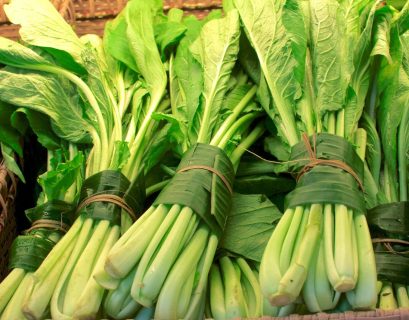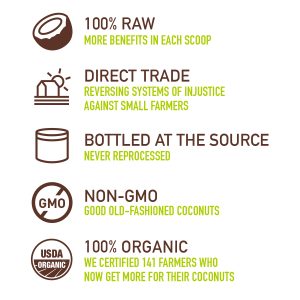The kitchen, often the bustling hub of a home, is a space where culinary delights come to life. Beyond its primary function, the kitchen provides an opportunity to incorporate greenery through kitchen gardens and indoor plants. This article explores the transformative impact of integrating plants into the kitchen environment, focusing on how kitchen gardens and indoor plants contribute to improved air quality, aesthetics, and overall environmental well-being.
1. Air Purification through Indoor Plants:
a. Natural Air Filtration:
Indoor plants have a remarkable ability to act as natural air purifiers. Through a process known as phytoremediation, plants absorb and metabolize pollutants, effectively filtering out harmful substances from the air.
b. Common Airborne Toxins:
Indoor air can contain pollutants such as formaldehyde, benzene, and trichloroethylene, which emanate from household items like furniture, paints, and cleaning products. Plants like spider plants, snake plants, and peace lilies are known for their ability to target and reduce these toxins.
2. Humidity Regulation:
a. Natural Humidifiers:
Certain indoor plants release water vapor through a process called transpiration, acting as natural humidifiers. This can be particularly beneficial in kitchens, where cooking activities often contribute to drier indoor air.
b. Optimal Humidity Levels:
Maintaining optimal humidity levels enhances indoor comfort and can help alleviate respiratory issues. Plants like ferns and palms are effective in contributing to a balanced humidity environment.
3. Aesthetic Enhancements:
a. Visual Appeal:
Beyond their functional benefits, indoor plants bring a touch of nature and visual appeal to the kitchen. Greenery adds warmth and character, transforming the space into a more inviting and pleasant environment.
b. Creative Display Options:
Kitchen gardens and potted plants offer versatile display options. Vertical gardens, hanging planters, or a collection of potted herbs on windowsills not only contribute to aesthetics but also maximize limited kitchen space.
4. Kitchen Gardens for Fresh Herbs and Produce:
a. Year-Round Herb Access:
Establishing a kitchen garden allows individuals to have year-round access to fresh herbs. Herbs like basil, mint, and rosemary not only enhance culinary experiences but also emit delightful fragrances.
b. Reduced Food Miles:
Growing herbs and some produce in a kitchen garden reduces reliance on store-bought options, minimizing the carbon footprint associated with transportation. This aligns with sustainable practices by promoting local and homegrown food.
5. Promoting Biodiversity:
a. Diverse Plant Selection:
Introducing a variety of indoor plants in the kitchen promotes biodiversity within the home environment. Different species contribute to a healthier and more resilient indoor ecosystem.
b. Creating Microhabitats:
Each plant species creates a microhabitat that supports a unique set of microorganisms. This diversity enhances the overall health of the indoor environment, mimicking natural ecosystems on a smaller scale.
6. Cognitive and Emotional Benefits:
a. Stress Reduction:
Research indicates that the presence of indoor plants can reduce stress and promote a sense of well-being. Greenery in the kitchen creates a calming atmosphere, providing a retreat from the demands of daily life.
b. Enhanced Productivity:
Studies have shown that the introduction of plants in workspaces, including kitchens, can enhance cognitive function and productivity. The positive effects of greenery contribute to a more efficient and enjoyable cooking experience.
7. Sustainable Practices:
a. Composting with Kitchen Scraps:
A kitchen garden can be part of a sustainable waste management system. Composting kitchen scraps, such as fruit and vegetable peels, provides nutrient-rich soil for plants, closing the loop on organic waste.
b. Reducing Single-Use Packaging:
Growing herbs at home reduces the reliance on store-bought herbs packaged in single-use plastic. This simple practice aligns with a reduction in plastic waste, contributing to environmental sustainability.
8. Educational Opportunities:
a. Hands-On Learning:
Maintaining a kitchen garden provides an opportunity for hands-on learning, especially for children. Involving family members in the care of plants fosters a sense of responsibility and environmental awareness.
b. Understanding Plant Life Cycles:
Observing plants grow, flower, and potentially produce fruits offers insights into the life cycles of living organisms. This experiential learning can deepen appreciation for nature and the environment.
9. Adaptable to Different Spaces:
a. Small Spaces and Apartments:
Even in small kitchens or apartments with limited natural light, there are indoor plants that thrive. Compact herbs like chives, parsley, and thyme can flourish on windowsills or in hanging planters.
b. Vertical Gardening:
Vertical gardening is a space-efficient solution, allowing individuals to maximize available wall space for growing herbs and small plants. This approach transforms vertical surfaces into green focal points.
10. Low-Maintenance Options:
a. Succulents and Cacti:
For those with limited time for plant care, succulents and cacti are excellent low-maintenance options. These plants thrive in arid conditions and can add a touch of greenery with minimal attention.
b. Herbs for Beginners:
Herbs like basil, mint, and chives are forgiving and resilient, making them ideal choices for beginners. Their adaptability makes them suitable for various kitchen environments.
Conclusion:
Integrating kitchen gardens and indoor plants into the heart of the home goes beyond mere decoration—it transforms the kitchen into a thriving ecosystem. From purifying the air and regulating humidity to providing fresh herbs and promoting biodiversity, the benefits of greenery in the kitchen are abundant. As individuals embrace the idea of cultivating a green kitchen, they not only contribute to a healthier indoor environment but also participate in sustainable practices that extend beyond their homes. By nurturing this connection with nature, the kitchen becomes a space where the culinary arts converge with environmental consciousness, creating a harmonious and sustainable lifestyle.

















